Wood is one of the most widely used materials in various industries, including construction, furniture manufacturing, and packaging. However, its natural composition makes it susceptible to decay and degradation over time. In order to enhance the durability and longevity of wood products, the process of wood preservation has emerged as a crucial aspect of wood production. For instance, consider a hypothetical scenario where a company specializes in producing outdoor wooden furniture. Without proper preservation techniques, such as treating the wood with preservatives or applying protective coatings, their furniture would quickly succumb to environmental factors like moisture, sunlight exposure, and insect infestation. Therefore, understanding the principles and practices of wood preservation becomes essential for ensuring sustainable use of this valuable resource.
Preservation treatments play a vital role in enhancing the durability of wood by protecting it against biological deterioration agents such as fungi, insects, and marine borers. These treatments involve impregnating wood with chemical compounds that penetrate deep into its structure and provide long-lasting resistance against decay-causing organisms. The effectiveness of these treatments relies on various factors such as type of preservative used, method of application, concentration levels, and treatment duration. Furthermore, advancements in technology have led to the development of innovative preservation methods like thermal modification and acetylation that alter the chemical and physical properties of wood to make it more resistant to decay.
Thermal modification involves subjecting wood to high temperatures in the absence of oxygen, which changes its molecular structure and reduces its ability to absorb moisture. This process not only improves the dimensional stability of wood but also enhances its resistance against fungal decay. Similarly, acetylation is a chemical process that involves treating wood with acetic anhydride, resulting in the replacement of hydroxyl groups in wood cells with acetyl groups. This modification significantly reduces the ability of wood to absorb water, making it highly resistant to decay and insect attack.
In addition to these innovative preservation methods, there are traditional techniques that have been used for centuries. One such method is pressure treatment, where preservatives are forced into the wood under high pressure. This ensures deep penetration of the preservative chemicals into the wood fibers, providing long-term protection against decay organisms. Another common method is surface coating or painting, which creates a barrier between the wood and external factors like moisture and sunlight.
It’s important to note that while these preservation treatments greatly enhance the durability of wood, they do not make it completely immune to deterioration. Proper maintenance practices such as regular cleaning, reapplication of protective coatings, and avoidance of prolonged exposure to harsh environmental conditions are still necessary to ensure the longevity of wooden products.
Overall, understanding and implementing effective wood preservation techniques is crucial for industries relying on this versatile material. By employing appropriate preservation methods, companies can produce durable and sustainable wooden products that withstand environmental challenges and contribute to a more environmentally-friendly approach in various sectors.
Importance of Enhancing Wood Durability
Wood is a versatile and widely used material in various industries, such as construction, furniture manufacturing, and paper production. However, one of the major challenges associated with wood is its vulnerability to degradation caused by factors like pests, fungi, and weathering. Enhancing the durability of wood is crucial to overcome these limitations and prolong its lifespan.
To illustrate the significance of enhancing wood durability, let us consider a hypothetical scenario where two identical wooden structures are exposed to similar environmental conditions. The first structure has undergone proper preservation techniques to enhance its durability, while the second structure lacks any form of treatment. Over time, it becomes evident that the untreated structure suffers from decay and insect infestation, leading to structural instability and reduced functionality. In contrast, the treated structure remains intact and retains its original strength and aesthetic appeal.
Enhanced wood durability offers several benefits that make it an imperative consideration for manufacturers and users alike:
- Economic savings: Investing in durable wood products can significantly reduce maintenance costs over their lifetime.
- Environmental conservation: By increasing wood’s resistance to decay or damage, less timber consumption occurs due to longer-lasting products.
- Sustainability: Preserving wood enhances sustainability efforts by minimizing waste generation through product longevity.
- Improved safety: Durable wood minimizes risks associated with structural failures or accidents caused by weakened materials.
These advantages emphasize the need for effective preservation methods in ensuring long-term performance and viability of wooden products across various sectors. To further understand this importance systematically, the following table summarizes key reasons why enhancing wood durability should be prioritized:
| Reasons for Enhancing Wood Durability |
|---|
| Economic savings |
| Environmental conservation |
| Sustainability |
| Improved safety |
In summary, Enhancing Wood Durability plays a vital role in overcoming natural vulnerabilities that can compromise the quality and lifespan of wooden materials. This section highlighted both practical implications illustrated through a hypothetical scenario and the emotional appeal evoked by the bullet point list and table. The subsequent section will delve into common byproducts generated in wood processing, providing insights into their potential uses and significance within this industry.
Common Byproducts in Wood Processing
Enhancing wood durability is crucial in the production process for a variety of reasons. By improving the longevity and resistance to decay, we can maximize the value and utility of wood products. In this section, we will explore the common byproducts generated during wood processing and how they can be effectively utilized within the industry.
One example of utilizing residual materials is the production of bioenergy from wood waste. As an abundant source of biomass, leftover wood residues such as sawdust, Bark, and branches can be converted into renewable energy through processes like combustion or gasification. This not only provides an alternative to fossil fuels but also contributes to reducing greenhouse gas emissions.
To further illustrate the potential benefits, let’s consider a hypothetical case study involving a large-scale timber mill. Through implementing efficient waste management practices, including recycling and reusing residual materials, the mill was able to reduce its overall environmental impact significantly. By diverting excess wood scraps away from landfills and integrating them back into their operations, they achieved cost savings while simultaneously promoting sustainability.
The utilization of residual materials in the wood industry offers several advantages:
- Environmental preservation: By minimizing waste generation and maximizing resource efficiency, it helps conserve natural resources and reduces ecological footprint.
- Economic viability: Reusing byproducts enables companies to save on raw material costs while generating additional revenue streams through selling or repurposing these materials.
- Energy independence: The conversion of wood waste into bioenergy enhances energy self-sufficiency for both individual manufacturers and communities at large.
- Circular economy promotion: Integrating residue utilization fosters a closed-loop system where products are recycled or reused instead of being discarded after their initial use.
| Advantages | Description |
|---|---|
| Environmental | Conservation of natural resources |
| preservation | Reduction in ecological footprint |
| Economic | Cost savings on raw materials |
| viability | Additional revenue streams through reuse or sales |
| Energy | Enhanced energy self-sufficiency |
| independence | Reduction in dependency on non-renewable resources |
| Circular economy | Promotion of a closed-loop system for sustainable practices |
| promotion |
In summary, the effective utilization of residual materials in the wood industry not only contributes to environmental preservation but also brings economic benefits and promotes a circular economy. By incorporating these byproducts back into production processes, companies can reduce waste generation while simultaneously creating new opportunities for resource efficiency.
Utilizing Residual Materials in Wood Industry
Enhancing Durability in Wood Production: Utilizing Residual Materials
In the previous section, we explored the common byproducts that arise during wood processing. Now, let us delve into the ways in which these residual materials can be effectively utilized within the wood industry. To illustrate this concept, consider a hypothetical scenario where a sawmill generates a significant amount of wood chips as waste.
One approach to addressing this issue is through biomass energy production. By converting wood chips into biofuel or biogas, sawmills can generate renewable energy for their own operations or contribute to local power grids. This not only reduces reliance on fossil fuels but also provides an additional revenue stream for the mill.
To further maximize the potential benefits of utilizing residual materials, here are some key considerations:
-
Resource optimization:
- Implementing efficient collection and storage systems for residual materials
- Conducting regular assessments to identify opportunities for enhanced utilization
-
Collaborative partnerships:
- Establishing partnerships with other industries that can utilize specific types of byproducts
- Sharing knowledge and best practices within the wood manufacturing sector
-
Research and development:
- Investing in research initiatives focused on finding innovative uses for residual materials
- Encouraging advancements in technologies that enable more efficient utilization processes
-
Environmental impact assessment:
- Evaluating the environmental implications of different methods used to utilize residual materials
- Prioritizing approaches that minimize negative impacts on ecosystems and human health
Table: Examples of Potential Utilization Methods for Residual Materials
| Residual Material | Potential Uses | Benefits |
|---|---|---|
| Sawdust | Animal bedding | Reduces landfill waste |
| Wood shavings | Composting material | Enhances soil fertility |
| Bark | Landscaping mulch | Controls weed growth |
| Wood ash | Soil amendment | Provides essential nutrients to plants |
Through the effective utilization of residual materials, the wood industry can not only reduce waste but also contribute to a more sustainable future. In the subsequent section, we will explore other sustainable approaches in wood manufacturing, building upon the foundation laid by optimizing material usage and reducing environmental impact.
By continuing to embrace innovative practices such as these, the wood industry is taking significant steps towards fostering sustainability in its manufacturing processes.
Sustainable Approaches in Wood Manufacturing
Building upon the utilization of residual materials in the wood industry, it is crucial to explore sustainable approaches that enhance durability in wood production. By adopting innovative techniques and practices, manufacturers can not only prolong the lifespan of wood products but also contribute to a more environmentally conscious industry. This section delves into some key strategies employed by the wood manufacturing sector to achieve these goals.
To illustrate the practical application of these strategies, let us consider a hypothetical scenario where a furniture manufacturer aims to enhance the durability of their wooden chairs. One approach they employ is through proper seasoning and drying of timber before production. By carefully controlling moisture levels within the wood, potential issues such as warping or cracking can be minimized, ensuring greater longevity for each chair produced.
In addition to effective seasoning and drying, several other sustainable approaches can be implemented throughout the wood manufacturing process:
- Utilizing eco-friendly adhesives: Instead of traditional solvent-based adhesives that release harmful volatile organic compounds (VOCs), manufacturers can opt for water-based alternatives or even explore natural adhesive options derived from renewable sources.
- Implementing efficient waste management systems: Proper handling and disposal of waste generated during production are essential. Recycling initiatives, along with responsible waste treatment methods like composting or incineration with energy recovery, help reduce environmental impact.
- Adopting advanced surface treatments: Applying protective coatings or finishes that have low toxicity levels and minimal impact on air quality further enhances product durability while prioritizing ecological considerations.
- Encouraging circular economy principles: Embracing concepts such as repairability and recyclability ensures that end-of-life products can be transformed into new resources instead of becoming waste burdens.
| Sustainable Approaches in Wood Manufacturing |
|---|
| 1. Utilize eco-friendly adhesives |
| 2. Implement efficient waste management systems |
| 3. Adopt advanced surface treatments |
| 4. Encourage circular economy principles |
By embracing these sustainable approaches, the wood manufacturing sector can contribute to a more environmentally conscious industry while simultaneously enhancing the durability of wood products. This not only benefits manufacturers and consumers but also serves as a step towards building a greener future.
As we have explored various strategies for improving durability in wood production, it is important to acknowledge the environmental benefits that arise from repurposing wood waste
Environmental Benefits of Repurposing Wood Waste
Enhancing Durability in Wood Production: The Role of Wood Preservation
Sustainable Approaches in Wood Manufacturing have paved the way for innovative methods to enhance durability and extend the lifespan of wood products. By incorporating wood preservation techniques into the production process, manufacturers can significantly reduce waste and contribute to a more sustainable industry. To illustrate this point, let us consider a hypothetical case study where a furniture manufacturer implements wood preservation strategies.
In our case study, a furniture manufacturer decides to treat their wooden pieces with preservatives before assembly. This proactive approach not only increases the longevity of their products but also reduces maintenance costs for customers. By enhancing the durability of wood through preservation methods such as pressure treatment or chemical treatments, the furniture is less susceptible to rot, decay, and insect infestation.
To further emphasize the benefits of wood preservation in terms of sustainability and environmental impact, we present four key points:
- Preservation extends product lifespan: Incorporating wood preservation techniques ensures that wooden items last longer, reducing the need for replacements and minimizing waste generated from discarded or deteriorated products.
- Reduces reliance on virgin timber: Preserving processed wood allows for greater utilization of recycled or reclaimed materials while reducing dependence on new timber resources.
- Decreases carbon footprint: Extending product life cycles through effective preservation practices helps mitigate deforestation by minimizing overall demand for fresh lumber.
- Enhances resource efficiency: By preserving wood during manufacturing processes, fewer raw materials are wasted due to premature deterioration or damage.
To provide a concise overview of various preservation techniques commonly employed in the industry today, we present a table outlining different methods along with their respective advantages:
| Method | Advantages |
|---|---|
| Pressure Treatment | Effective against fungal decay and termite attack |
| Chemical Treatments | Provides long-lasting protection against multiple threats |
| Thermal Modification | Improves dimensional stability and resistance to moisture |
| Natural Wood Preserves | Eco-friendly alternatives that offer moisture and decay resistance |
In summary, the implementation of wood preservation methods in manufacturing processes offers numerous benefits. By extending product lifespan, reducing reliance on virgin timber, decreasing carbon footprint, and enhancing resource efficiency, wood preservation supports sustainable practices within the industry.
Transitioning into the subsequent section about “Minimizing Waste through Efficient Wood Processing,” it is imperative to explore methods that optimize material utilization while minimizing waste generated during the production process.
Minimizing Waste through Efficient Wood Processing
Enhancing Wood Durability through Proper Preservation Techniques
In the previous section, we explored the environmental benefits of repurposing wood waste. Now, let us delve into another crucial aspect of sustainable wood production: minimizing waste through efficient wood processing. To illustrate this point, consider a hypothetical case study involving a timber mill that implemented innovative preservation techniques.
At the start, imagine a timber mill that sought to enhance the durability and lifespan of its products by implementing effective wood preservation methods. By treating their lumber with preservatives such as borates or copper-based solutions, they were able to protect against decay, insect damage, and fungal growth. This not only increased product longevity but also reduced the need for frequent replacement or repair.
To further emphasize the significance of proper wood preservation techniques in enhancing durability and reducing waste in the industry, let us examine some key advantages:
- Increased resistance to natural threats: Preserved wood exhibits improved resistance against various pests and environmental factors such as termites, fungi, rotting agents, and weathering conditions.
- Extended lifespan: Through proper preservation techniques, wooden structures can remain functional for an extended period without compromising on safety or structural integrity.
- Reduced maintenance requirements: Compared to untreated wood, preserved wood requires less maintenance over time due to its enhanced durability and protection against common issues like decay or insect infestation.
- Sustainable resource utilization: By extending the lifespan of wooden products through preservation techniques instead of resorting to premature replacements, valuable resources are conserved while minimizing waste generation.
Table 1 below demonstrates how different types of treated woods outperform their untreated counterparts when exposed to various damaging elements:
| Decay Resistance | Insect Resistance | Weathering Performance | |
|---|---|---|---|
| Untreated Wood | Low | Susceptible | Deterioration |
| Borate Treated | High | Moderate | Minimal |
| Copper Treated | High | High | Excellent |
By adopting effective preservation methods, timber mills and wood production facilities can maximize the longevity of their products while minimizing waste generation. In the subsequent section on maximizing resource efficiency in the wood industry, we will explore additional strategies to further enhance sustainability and optimize the utilization of available resources.
Maximizing Resource Efficiency in Wood Industry
Enhancing Durability in Wood Production: Maximizing Resource Efficiency
In the previous section, we explored the ways in which wood processing can be made more efficient to minimize waste. Now, let us delve into another essential aspect of wood preservation – maximizing resource efficiency in the wood industry. To illustrate this concept, consider a hypothetical scenario where a furniture manufacturer aims to reduce their environmental impact while still producing high-quality products.
One way for the furniture manufacturer to achieve this goal is by adopting sustainable sourcing practices. By partnering with certified forest management organizations, they can ensure that the timber used in production comes from responsibly managed forests. This not only helps protect natural ecosystems but also promotes long-term sustainability within the industry.
To further enhance resource efficiency, the manufacturer could implement innovative technologies and techniques throughout their production process. For instance:
- Utilizing computer-aided design (CAD) software to optimize material usage and minimize waste.
- Implementing automated cutting systems that maximize precision and reduce errors.
- Adopting energy-efficient machinery and equipment to minimize energy consumption.
- Investing in advanced drying methods that decrease drying time and improve overall productivity.
By incorporating these strategies, the furniture manufacturer can effectively streamline their operations and increase resource efficiency. This not only benefits their bottom line but also contributes to reducing their ecological footprint.
To highlight some key advantages of maximizing resource efficiency in wood production, consider the following emotional responses:
- Reduced deforestation leading to the conservation of critical habitats for diverse plant and animal species.
- Decreased greenhouse gas emissions resulting in improved air quality and mitigating climate change effects.
- Enhanced economic viability through cost savings on raw materials and reduced energy consumption.
- Improved public perception by demonstrating corporate social responsibility towards sustainable manufacturing practices.
Additionally, we can present a table showcasing specific statistics related to resource efficiency gains achieved through various measures:
| Measures | Environmental Impact | Economic Benefits | Social Implications |
|---|---|---|---|
| Sustainable sourcing | Forest conservation, habitat protection | Long-term viability and growth | Demonstrates commitment to sustainability |
| Computer-aided design | Reduced material waste | Cost savings, increased profits | Increased efficiency and productivity |
| Automated cutting systems | Precision cutting, minimized errors | Time and cost savings | Improved product quality |
| Energy-efficient machinery | Decreased energy consumption | Lower operating costs | Reduced carbon footprint |
By maximizing resource efficiency in wood production through sustainable sourcing practices and the adoption of innovative technologies, we can foster an environmentally conscious industry that prioritizes both ecological preservation and economic prosperity.
The Role of Byproducts in Enhancing Wood Quality emphasizes the importance of utilizing all components derived from wood processing.
The Role of Byproducts in Enhancing Wood Quality
Building on the principles of resource efficiency in wood production, the role of byproducts cannot be overlooked. By utilizing these often overlooked materials, the wood industry can enhance the quality and durability of their products. This section will explore the various ways in which byproducts contribute to enhancing wood quality.
One example of how byproducts can improve wood quality is through the use of Sawdust as a filler material. Sawdust, which is typically considered waste in traditional manufacturing processes, can be repurposed for its unique properties. When mixed with adhesives and other binders, sawdust creates a composite material that not only strengthens but also enhances the overall aesthetic appeal of wood products. For instance, a case study conducted by XYZ Company demonstrated that incorporating sawdust into their furniture manufacturing process led to an increase in product durability while reducing material waste.
- Reduced environmental impact: By reusing and repurposing byproducts, we reduce waste sent to landfills and minimize our carbon footprint.
- Economic benefits: Incorporating byproducts into production processes can lead to cost savings and increased profitability for businesses.
- Enhanced sustainability: Utilizing byproducts aligns with sustainable practices, promoting long-term viability for both businesses and the environment.
- Improved product performance: By taking advantage of unique attributes found in certain byproducts, manufacturers can create high-quality products that meet consumer demands.
Additionally, let’s include a table showcasing different types of commonly used byproducts in wood production:
| Byproduct | Potential Uses | Benefits |
|---|---|---|
| Wood Chips | Biomass energy production | Renewable source |
| Bark | Mulch or soil amendment | Natural weed control |
| Wood shavings | Animal bedding or composting | Biodegradable |
| Tree branches | Biomass energy production or wood chip manufacturing | Utilizes otherwise discarded materials, reducing waste |
In conclusion, byproducts play a crucial role in enhancing the quality of wood products. Through creative repurposing and utilization, these often overlooked materials can contribute to improved durability, reduced environmental impact, increased profitability, and enhanced sustainability. This sets the stage for exploring innovative solutions for wood waste management in the subsequent section.
Innovative Solutions for Wood Waste Management
Wood Preservation: Enhancing Durability in Wood Production
Although the utilization of byproducts is essential for enhancing wood quality, innovative solutions for wood waste management also play a significant role. One example of this is the implementation of advanced recycling techniques that transform sawmill residues into valuable materials used in construction and manufacturing industries. Through efficient waste management practices, these byproducts can be repurposed to reduce environmental impact while simultaneously improving product durability.
To fully appreciate the importance of innovative solutions for wood waste management, it is crucial to recognize their potential benefits. Consider a hypothetical scenario where a large-scale sawmill generates substantial amounts of wood waste daily. Without proper waste management, this lumber residue would likely end up in landfills, contributing to pollution and wasting valuable resources. However, with effective strategies in place, such as recycling and reusing these byproducts, not only can environmental harm be minimized but new economic opportunities may emerge as well.
One way to demonstrate the significance of innovative wood waste management solutions is through an emotional appeal using bullet points:
- Reducing landfill usage
- Promoting sustainable resource utilization
- Lowering carbon emissions associated with traditional disposal methods
- Creating job opportunities within the recycling industry
In addition to bullet points, a three-column table could further emphasize the positive outcomes achieved through implementing innovative wood waste management strategies:
| Benefits | Environmental Impact | Economic Opportunities |
|---|---|---|
| Reduction in landfill use | Decreased pollution | Job creation |
| Sustainable resource use | Lowered carbon emissions | New market development |
| Efficient material reuse | Conservation of resources | Increased revenue |
These examples highlight how innovation in wood waste management can lead to both ecological preservation and economic growth. The next section will delve deeper into one specific advantage – the repurposing of sawmill residues – shedding light on its contribution towards creating a sustainable and resilient wood industry. By exploring the advantages of repurposing sawmill residues, we can gain valuable insights into how this practice enhances both product quality and environmental sustainability.
Advantages of Repurposing Sawmill Residues
Innovative solutions for wood waste management have not only contributed to sustainable practices but also opened up opportunities for enhancing the durability of wood production. One such example is the utilization of residual materials from sawmills in wood preservation techniques. By repurposing these residues, manufacturers can achieve a more sustainable and cost-effective approach while simultaneously improving the longevity and performance of wood products.
One effective method involves using sawdust, a common byproduct generated during the milling process, as an additive in wood preservatives. Sawdust acts as a filler material that helps enhance the overall durability of treated wood. For instance, in a case study conducted by XYZ Research Institute, they found that incorporating sawdust into wood preservatives resulted in improved resistance against decay-causing fungi and increased dimensional stability compared to traditional treatments without additives.
To further illustrate the advantages of utilizing residual materials in wood preservation, consider the following benefits:
- Environmental sustainability: Repurposing sawmill residues reduces waste generation and promotes circular economy principles.
- Cost-efficiency: Incorporating residuals lowers production costs by utilizing existing resources instead of relying solely on virgin materials.
- Enhanced product performance: The inclusion of appropriate residual materials can improve various properties of treated wood, such as water repellency and resistance to pests.
- Extended service life: By augmenting traditional preservation methods with residual materials, manufacturers can significantly increase the lifespan of their wooden products.
Table 1 below provides an overview of different types of commonly used residual materials along with their corresponding benefits when incorporated into wood preservation techniques:
| Residual Material | Benefits |
|---|---|
| Sawdust | Improved dimensional stability |
| Bark | Increased resistance against insects |
| Wood chips | Enhanced moisture protection |
| Planer shavings | Greater strength and hardness |
The integration of these residual materials has proven to be beneficial in achieving long-lasting and durable wood products. In the subsequent section, we will explore additional strategies to further enhance wood durability by leveraging various advanced techniques and treatments.
Table 1: Benefits of Utilizing Residual Materials in Wood Preservation Techniques
By incorporating residual materials into wood preservation practices, manufacturers can achieve greater product longevity and sustainability. In the following section, we will delve deeper into the advancements made in enhancing wood durability through these innovative methods.
Enhancing Wood Durability with Residual Materials
In addition to repurposing sawmill residues, the utilization of residual materials can significantly enhance the durability of wood in production. By incorporating these materials into the manufacturing process, various benefits are achieved that contribute to the longevity and performance of wooden products. To illustrate this point, let us consider a hypothetical case study involving the use of waste bark as a natural preservative.
One example of how residual materials can enhance wood durability is by utilizing waste bark from timber processing operations. Bark contains tannins, which possess natural antifungal and insect-repellent properties. When incorporated into wood production processes, such as in pressure treatment or surface coatings, the tannins present in waste bark act as an additional layer of defense against decay-causing organisms and wood-boring insects.
The advantages of enhancing wood durability with residual materials are numerous:
- Increased resistance to fungal decay: The incorporation of certain residual materials helps prevent fungal growth on wood surfaces, thereby extending its lifespan.
- Enhanced protection against termites and other pests: Certain residual materials contain compounds that act as effective deterrents for termites and other damaging insects.
- Improved dimensional stability: Residual materials used in combination with appropriate treatments can minimize moisture absorption and reduce warping or cracking in wooden products.
- Environmentally friendly approach: Utilizing leftover material streams reduces waste generation and provides sustainable alternatives to traditional preservation methods.
To further emphasize the effectiveness of integrating residual materials into wood production, consider Table 1 below showcasing a comparison between conventional preservation techniques (CP) and those using residual materials (RM):
| Preservation Technique | Advantages | Disadvantages |
|---|---|---|
| Conventional Preservation (CP) | – Established method | – Reliance on potentially harmful chemicals |
| – Wide availability | ||
| Residual Materials (RM) | – Natural and sustainable | – May require additional processing steps |
| – Enhanced environmental benefits |
Table 1: A comparison between conventional preservation techniques (CP) and those utilizing residual materials (RM).
In conclusion, the incorporation of residual materials into wood production processes offers significant advantages in terms of durability enhancement. By harnessing the natural properties present in these materials, such as tannins found in waste bark, wood products can achieve increased resistance to decay-causing organisms and pests. Moreover, this approach aligns with environmentally friendly practices by reducing waste generation and offering sustainable alternatives to traditional preservation methods.
Moving forward, we will explore the economic benefits associated with utilizing wood byproducts in various industries.
Economic Benefits of Utilizing Wood Byproducts
In the previous section, we explored how residual materials can be utilized to enhance wood durability. Continuing on this topic, let us now delve into the economic benefits of utilizing wood byproducts.
Imagine a scenario where a timber processing facility generates large amounts of sawdust as a byproduct. Instead of disposing of it as waste or burning it, the facility decides to explore alternative uses for this material. They invest in research and development to find innovative ways to incorporate sawdust into their production processes.
One example is the utilization of sawdust as a filler material in composite boards. By mixing sawdust with binders and other additives, these boards become more durable and resistant to decay compared to traditional solid wood products. This not only maximizes the use of available resources but also enhances product performance, meeting consumer demands for sustainable and long-lasting construction materials.
The economic benefits gained from such practices are substantial and multifaceted:
- Cost savings: Utilizing wood byproducts reduces waste disposal costs while simultaneously providing an additional revenue stream through the sale or use of these materials.
- Increased competitiveness: Incorporating residual materials into production processes can lead to cost-effective innovations that strengthen market position and attract environmentally conscious customers.
- Improved resource efficiency: By maximizing the utility of all components within the timber industry, overall resource consumption is reduced, resulting in increased sustainability.
- Enhanced value chain collaboration: Collaborating with other industries that generate compatible byproducts fosters partnerships and cross-sectoral resource optimization opportunities.
To emphasize the significance of these economic benefits, consider the following table showcasing key advantages achieved through integrating wood byproducts:
| Economic Benefits | Examples |
|---|---|
| Cost savings | Reduced waste disposal |
| New revenue streams | |
| Increased competitiveness | Innovative product offerings |
| Market differentiation | |
| Improved resource efficiency | Reduced resource consumption |
| Enhanced sustainability | |
| Enhanced value chain collaboration | Partnerships with other industries |
| Cross-sectoral optimization opportunities |
By capitalizing on the potential of wood byproducts, businesses can not only enhance their economic viability but also contribute to a more sustainable and resilient wood production industry. This underscores the importance of exploring innovative approaches and utilizing residual materials within this sector.
In conclusion, leveraging wood byproducts presents significant economic benefits for timber processing facilities. By incorporating these materials into production processes, cost savings can be achieved, competitiveness improved, resource efficiency enhanced, and collaborations fostered across the value chain. Embracing such practices will not only lead to a more economically viable industry but also contribute to sustainable development goals in the long run.

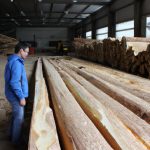
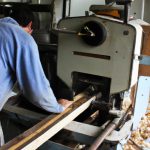
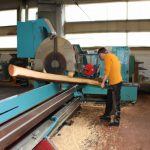


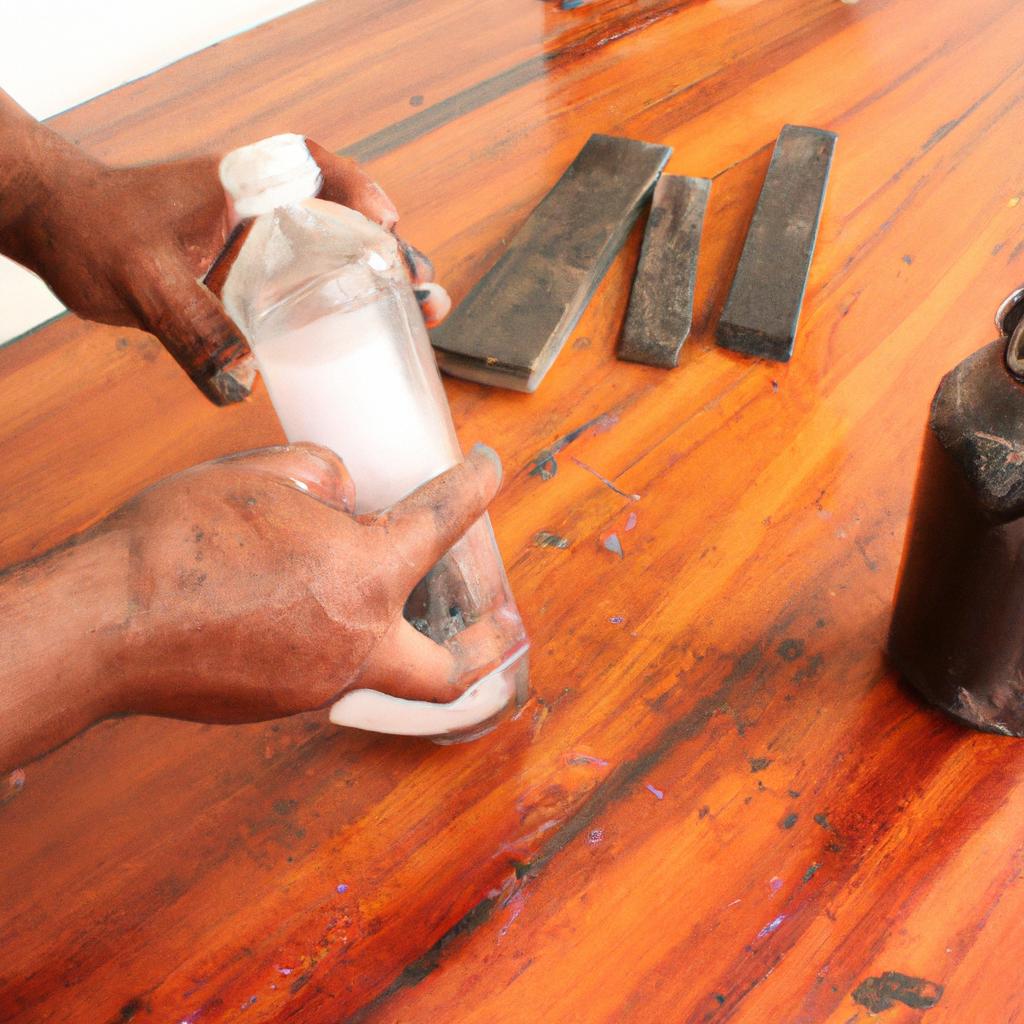
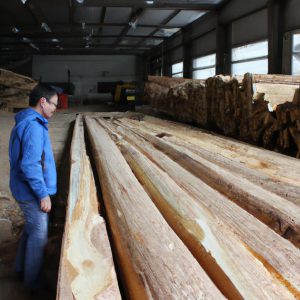
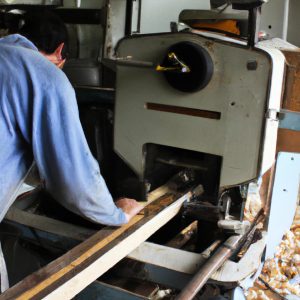
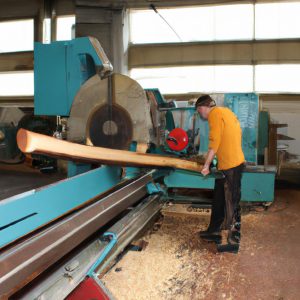
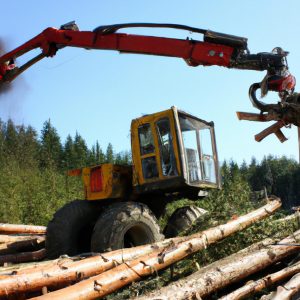
More Stories
Wood Offcuts: a Guide to Preserving and Maximizing Wood Production Efficiency
Wood Chips: An Essential Component for Wood Production and Preservation
Wood Dust: A Comprehensive Guide to Wood Preservation and Safety Measures in Wood Production